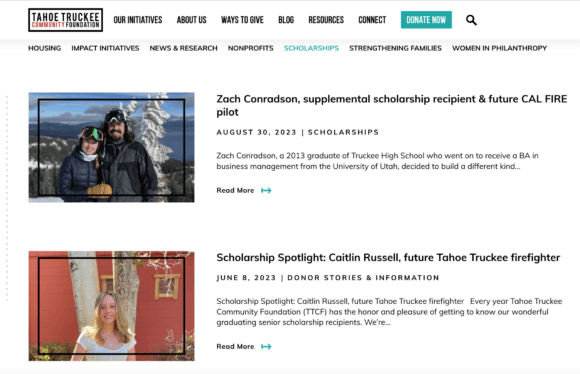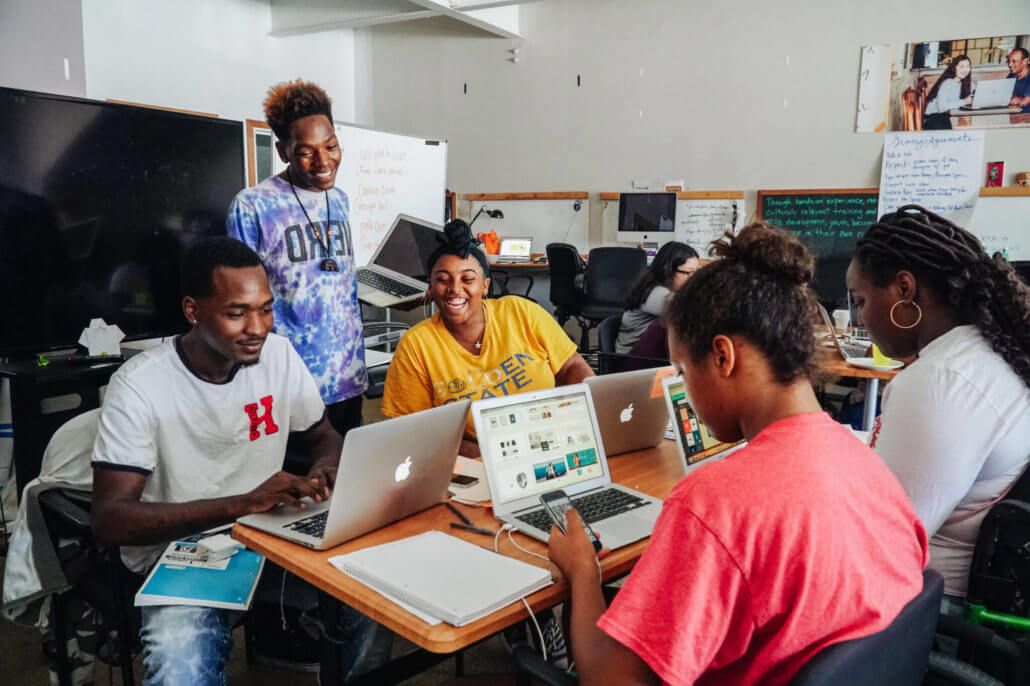The Power of Storytelling in Major Donor Fundraising: 4 Tips for Nonprofits
Strategies to help your organization connect with new and existing donors

Storytelling is likely a key part of your nonprofit’s content strategy already, helping you secure new supporters and showcase your organization’s impact. But it should also play a part in your major donor fundraising strategy. After all, anyone making a substantial donation must first connect personally with your nonprofit’s story.
To better weave storytelling into your organization’s major gift fundraising strategy, use these four tips:
- Tell authentic stories infused with data
- Use storytelling throughout the major donor fundraising cycle
- Leverage your website
- Include major donors in the story
By integrating these tips, your team will be more likely to connect with donors on an emotional level, leading to improved relationships and higher chances of securing donations. Let’s dive in.
1. Tell authentic stories infused with data
Whether you’re reaching out to a prospect for the first time or checking in with a long-time major donor, you should be prepared to tell an authentic story about your nonprofit’s impact. These impact stories can be about beneficiaries, volunteers, or even other donors, as long as they showcase tangible impacts your nonprofit has made.
No matter whose story you’re telling, follow these tips to ensure authenticity:
- Let constituents tell stories in their own words whenever possible. Direct testimonials about your nonprofit’s effect on someone’s life have more power than secondhand stories. Gather testimonials by interviewing beneficiaries and volunteers or sending out surveys with open-ended questions. Then, incorporate direct quotes into written marketing materials and create videos that feature recorded interviews.
- Use names and faces if you have permission to. It’s easier to connect with a story when it includes memorable personal details. Ask those you interview for permission to use their name and photos when you share their stories (but always respect their decision if they want to stay anonymous).
- Focus on tangible impacts that you can back up with data. Include numbers and statistics in your stories to give them weight in the minds of major donors and prospects. Leverage your nonprofit’s fundraising and program data to showcase your positive results.
For example, Mangrove donates to diversity in tech nonprofits that support Black, Indigenous, and people of color in training for and obtaining technical development jobs. Any of these nonprofits might include a story like the following in an email to update us and other donors on their impact:
Ever since college, Leah has been trying to break into the tech industry and help revolutionize healthcare technology. But because she didn’t have access to the same professional networks and job training as her white peers, her dream felt out of reach. Thanks to your generous support of the Access for All Program, however, Leah was able to attend four conferences and access a free six-week mentorship program that helped her land the job of her dreams. Visit our website to hear more from Leah about the program’s impact on her life.
2. Use storytelling throughout the major donor fundraising cycle
Donorly’s major gift fundraising guide explains that the major donor fundraising cycle is made up of four stages: identification, cultivation, solicitation, and stewardship. Each of these stages is vital for securing donations and maintaining strong relationships with major donors—and storytelling can play a role in each one.
Let’s explore what you can do at each stage to leverage your storytelling skills:
- Identification: As you research prospects, note their specific philanthropic interests and backgrounds. This information will help you tailor the stories you tell to appeal to each prospect. For a prospect with a history of donating to LGBT rights campaigns, for instance, you might share a story about the success of your nonprofit’s advocacy work.
- Cultivation: Before making an ask, enhance your relationship building by sharing stories in conversations and emails. This fosters emotional connections and accelerates trust in your organization.
- Solicitation: To convince prospects to give a major gift, they must believe that their funds will be used wisely, transparently, and successfully. Reminding prospects of success stories when you make your ask can help reinforce their belief in your nonprofit.
- Stewardship: According to eCardWidget, lack of sufficient impact reporting is one of the top reasons donors lapse. Once donors give, it’s critical to keep them informed of how you use the funds and what difference their gift has made. Relaying data-infused stories about your nonprofit’s results will help you effectively communicate impact and steward major donor relationships.
To avoid repetition in your storytelling, you’ll need to consistently seek out new stories. Incorporate story collection into your operations by adding a story submission form to your website or interviewing volunteers after events.
3. Leverage your website
Your website can be an impactful tool for sharing stories with donors, no matter what stage of the fundraising cycle they’re in. Donors can visit your website to stay updated on your work, and you can easily share stories with prospects by including links, snippets, and QR codes in your outreach messages.
But first, you have to create pages and posts for the express purpose of storytelling. You can do this in several ways, including:
- Adding a permanent stories page that features a collection of beneficiary, volunteer, and donor stories about their involvement with your nonprofit.
- Creating annual impact reports that you post on your website and send out to individual donors to showcase your success stories each year.
- Highlighting specific, timely stories on your blog by regularly writing articles and sharing interviews with constituents.
There’s plenty of room to get creative and fit these new pages into your existing website content strategy. Take a look at how the Tahoe Truckee Community Foundation created a blog category devoted to sharing the impact of scholarships:

4. Include major donors in the story
Finally, don’t forget to give major donors a prominent role in every story you tell. Donors want to know how they can personally make a difference to your cause and how their gifts fit into your work. By highlighting them in your storytelling, you’ll show them how impactful they are.
Along with including general sentiments in your stories like “Thanks to your gift of $10,000…” or “Because of major donors like you…”, you can also tell the stories of major donors themselves. If they’re interested in being publicly recognized, you can conduct short interviews about their history with your organization and their personal connection to your cause. Then, share their stories with the rest of your support base.
For example, you might create a series of blog posts or social media shoutouts to thank the lead donors of a major fundraising campaign. You could interview each major donor and include their photos and testimonials on your website or social media pages. Doing so would not only deepen their relationship with your nonprofit but also show prospective donors how much you value and appreciate the members of your organization’s community.
By incorporating storytelling into your major donor fundraising strategy, you’ll be able to show existing and prospective donors alike how much their support truly matters. As you try out these strategies, make sure to note any feedback you receive on individual stories so you know what appeals most to major donors.
For more story-telling inspiration, browse other past branding and web design projects.
This article includes tips from a consulting company that advises nonprofits.
Photo by Patrick Tomasso on Unsplash.
A Certified B Corp, Mangrove is a woman-owned website design and development company with a diverse, talented team distributed around the globe. We’ve been building websites since 2009 that amplify the work of change-making organizations and increase the competitive power of businesses owned by historically marginalized people.
If you found this post helpful, subscribe to our monthly newsletter for notice of future posts and other news from us.




